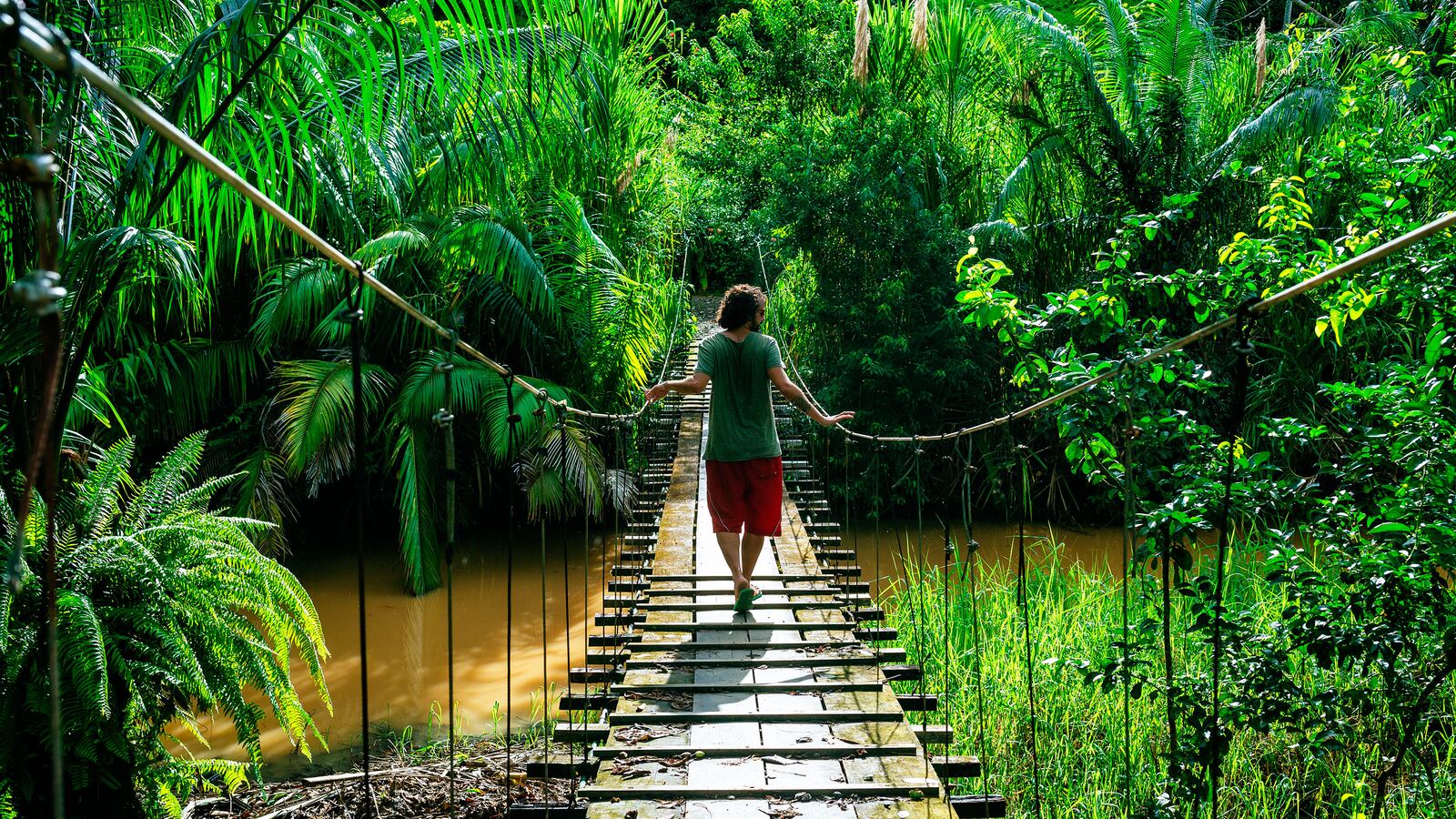Shutdowns. Border closings. Fourteen-day quarantines. From the start of the pandemic, restrictions threw travel plans, lives, and industries into chaos. The world then tried to reopen as the COVID-19 numbers dropped. Hoping to salvage some of the tourist season, Europe, for instance, reopened to Europeans and those from select countries.
Citizens in the “land of the free,” however, have largely found themselves locked in U.S. borders, due to a continuing high number of cases and inconsistent state approaches. With the exceptions of Mexico, Croatia, and Turkey, U.S. travelers have been essentially persona non grata to major tourist destinations.
Costa Rica, however, is changing this with a new, finely nuanced travel policy that aims to recover their tourism economy and welcome Americans back—just not all of them.
Costa Rican tourism offices revealed last month that it was opening its borders to select U.S. states. As of Sept. 1, the first eight states (and Washington, D.C.) were Connecticut, Maine, New Hampshire, New Jersey, New York, Vermont, Maryland, and Virginia. On Sept. 15, Colorado, Massachusetts, and Pennsylvania will join the list.
The move to carefully re-open was with the hope of incrementally restoring Costa Rica’s tourism economy, which accounts for 8.2 percent of the country’s GDP, generating 211,000 jobs that make up 8.8 percent of employment, according to Tourism Minister Gustavo Segura.
“Costa Rica’s tourism industry is essential to the country’s economic growth and development,” Segura tells The Daily Beast. “In 2019, more than 3.14 million international travelers visited the country, of which more than 1.3 million were U.S. travelers.”
The country’s best known as a place for ecotourism, providing opportunities to see one of the most biologically diverse places on the planet. Preserved land offers the possibility for tours through pristine dense jungles and to visit amazing geological features, like the popular Arenal Volcano, or kayak through their mangroves. The natural world is the country's best economic asset, and Costa Ricans knows it, which has incentivized their efforts in sustainability and renewable energy.
In other words, Costa Rica needs a sustainable and environmentally sound approach to its resources to not only protect its greatest assets, but also to bring in tourists. It also needs tourists to bring in the money to make this happen—pandemics tend to complicate a climate friendly economic ecosystem.
By letting some states in, the Costa Ricans are hoping to find some balance during what everyone can’t help but now call “these unprecedented times.”
Peninsula Papagayo in Costa Rica, for example, is a heavily forested, emerald-colored isthmus, outlined by sandy beaches and blue water. It is the location of one of the last tropical dry forests protected as a UNESCO World Heritage Site. It is also home to 7,000 plant species, 900 vertebrate species, 500 types of birds, and 8,000 species of butterflies and moths.
A popular getaway on a private peninsula, Papagayo draws in tourists seeking sustainable luxury travel.
“We are so fortunate to be located in one of the most beautiful places on earth,” Michael Mestraud, general manager for Four Seasons Resort Peninsula Papagayo and vice-president for their Regional Residential Operations-Americas, told The Daily Beast. The operation is described by Mestraud as “part sophisticated resort, part primitive playground,” a “heaven on earth for surfers, divers, hikers, bikers, nature lovers, and anyone who feels happiest in the outdoors.”
Due to the pandemic, the resort has been closed, but they are projecting reopening on Nov. 12, to take advantage of Thanksgiving and Festive events.
Mestraud sees the reopening of Costa Rica as a welcome change, especially since Americans are an important source for business. They are working with experts on COVID-19 for their Leading with Care program, focused on creating enhanced safety for employees, guests, and residents.
“The Four Seasons experience may look different in this new environment,” insists Mestraud, “but it will feel the same; ultimately, it will still be our people delivering the same attention to detail, intuitive service, and personalized care.”
The universal message of Costa Rica’s tourism appears to be one of nuanced caution and vigilance.
The list of U.S. states, for example, is not set in stone and it can grow or shrink, depending on the numbers. The current list of states have “an epidemiological condition with similar or lower levels of contagion than those of Costa Rica,” said Tourism Minister Segura. Americans have to supply proof of residency for their state, which can be done by a driver’s licence or state ID. Children are exempt.
Other requirements are the same for all international travelers. Every traveler must complete the digital epidemiological Health Pass form, and have a negative COVID-19 PCR test done within 72 hours before leaving (12 years old and up). They will not accept rapid, serological, or immunity tests. Travel insurance that covers medical expenses and a potentially longer stay due to quarantine is also required. If your travel insurance is international, they require a certification (in English or Spanish) to verify coverage: for example, does it cover Costa Rica travel, will it cover COVID-19 for upwards of $50,000 for medical, and $2000 for lodging?
It is also important to remember that with constantly changing coronavirus numbers, anyone returning home to the U.S. after traveling abroad should check on current re-entry requirements. You may be given a quarantine order upon arrival, and that may mean extending your time off from work.
Traveling globally has never been a simple process, and having a potentially shifting list of states for Americans may complicate things for long-term vacation planning. And yet, Costa Rica’s move seems to be working.
“Yes, we’ve had many requests from people in the 12 states wanting to travel to Costa Rica,” Eric Hrubant, CEO and founder of CIRE Travel in New York told The Daily Beast. He notes that vacation requests are currently ranging from five to 12 days. “People are itching to get away and Costa Rica is a destination that has it all—beaches, mountains, spiritual getaways.”
“It’s been a challenging year, but overall business is strong,” said Hrubrant, noting the impact of the pandemic. “March and April had zero new bookings (only changes to existing bookings), but in May things started to pick up for both business and vacation travel. July and August were good months, all things considered.”
CIRE Travel’s digital marketing team will be pushing Costa Rica trips this week, hoping to help make stranded Americans aware of their options.
The total impact of Costa Rica’s new move, of course, is yet to be known.
“We anticipate seeing a slow recovery for the tourism sector and local economies in Costa Rica,” said Tourism Minister Segura, “however, we are hopeful that due to the careful health and safety measures we have taken, Costa Rica will bounce back.”
Last month, the country did a “staggered reopening of tourism businesses,” with new restrictions and health protocols related to COVID-19 in place and focused on domestic travel. Closed from March 18 to August 1, it began welcoming visitors from the “United Kingdom, the Schengen Area, and Canada, and select countries within the European Union.”
If all goes well, it is possible for Costa Rica to not only model environmentally sustainable policies, but also to provide a delicate roadmap for tourism in other countries wanting American travelers. It will still be awhile before that outcome is known.
“This type of reopening could serve as a model for other countries,” Segura agrees cautiously, “however, we have not yet seen and evaluated the results of our efforts...All of the health and safety decisions that the Costa Rican government has made throughout the pandemic have been backed by experts at the Ministry of Health and have considered guidelines issued by the World Health Organization (WHO). We are hopeful that these careful measures will aid Costa Rica’s recovery.”
But for now, U.S. governors have another incentive to get their COVID-19 numbers under control—a chance for their citizens to see the world again.

